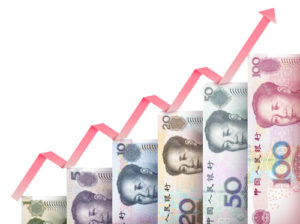 By Dwarka Lakhan (Sponsored Content)
By Dwarka Lakhan (Sponsored Content)
There is growing optimism that the Chinese markets will surprise on the upside as government reforms begin to take hold.
Since the beginning of the year, the country’s macro-economy has stabilized, fuelled by strengthening industrial output, an expanding service sector, rising retail sales, steady growth in electricity generation, power consumption and rail volume, and robust domestic demand.
Valuations are currently quite attractive, following a significant correction in China’s onshore markets from their 2015 highs. Non-financial blue chip companies are presently trading at an average of 15-20 times price/earnings ratio, below their historical highs.
Upside surprise waiting, Barclays says
Recognizing the potential for investors to make gains in China, Barclays Capital recently noted that there is an upside surprise waiting in the wings for China investors. “We think the latest data from China point to continued robust growth,” says Jian Chang of Barclays in Hong Kong.
The resurgence of optimism over China stems from the “new” China economy picking up steam on the back of reform-oriented government policies that are represented by the deliberate shift in focus from export-led to domestic-generated growth.
As the Chinese government continues to implement gradual reforms and capacity rationalization in several industries dominated by State Owned Entities (“SOE”) — such as steel, cement and iron ore — “new” China growth sectors such as healthcare, education and technology are benefiting from the ongoing rebalancing of the economy and secular drivers such as the country’s aging population and pervasive automation.
Incidentally, up until 2015 when government reforms took effect, China experienced a decade of double-digit GDP growth, during which its economy increased in size by almost 400%, from US$2.7 trillion to US$ 11 trillion.[i] In spite of its slower growth China remains one of the fastest growing economies in the world, with a forecasted growth rate of 6.5% in 2017 and 6% in 2018.
China is 15% of global economy but almost 50% of global economic growth
“On a global scale, China represents 15% of the world’s economy but accounts for close to 50% of global economic growth. It is inevitable that growth will be slower in an economy of its size. Just think of the growth rate in developed countries like Canada and the US which is about one-third the rate of China,” suggests Christine Tan, Chief Investment Officer and Senior Portfolio manager with Excel Investment Counsel Inc. in Mississauga.
She adds: “In reality, the Chinese economy is simply rebalancing towards sustainable domestically driven growth, and not necessarily slowing down.”
Experts from China AMC, sub-advisor of the Excel China Fund, support her views. They suggest that slower growth in China is “a good thing,” contending that slower growth is more sustainable, compared to double digit growth rates which are unsustainable. Thus it is fair to say that China is not slowing down, its economy is simply transitioning to a new state, reducing the probability of major disruptions.
And According to Li Wei, head of the Development Research Center of the State Council, that might be true. “China’s economy now faces “almost zero big downside risk,” he says.
Tan believes stocks in specific sectors such as Healthcare, Education, Environmental Protection, and Domestic Consumption will especially benefit from reforms. These multi-year secular themes, in her opinion, have higher growth potential and pricing power and are less correlated to GDP growth.
China 7 times larger than Canadian economy, growing 3 times faster
Looking at China from the potential opportunities it presents, it must be noted that the Chinese economy is currently about seven times the size of the Canadian economy and growing about three times faster: providing perspective on the magnitude of the China investment opportunity relative to the Canadian market.
In fact, China is the largest emerging market in terms of equity capitalization and the second largest among all markets, behind the US. It simply cannot be ignored as it stabilizes.


